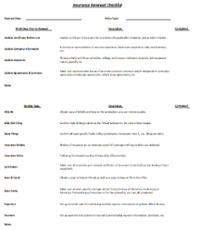
Trucking regulators at the U.S. Department of Transportation have searched for better ways to enforce to hours of service requirements for quite some time. When electronic logging devices first became widespread, many people at the National Transportation Safety Board viewed them as great ways to reduce accidents and save lives through improved enforcement of existing regulations. Now, a new study was released that throws that logic into question.
Driver Restrictions Created With Road Safety In Mind
The federal motor carrier safety administration, which is part of the National Transportation Safety Board under the purview of the Department of Transportation, has enacted regulations restricting the number of hours truck drivers engaged in interstate commerce can work dating back decades. The regulations were prompted by safety fears stemming from accidents where over-tired truck drivers were at fault. So truck drivers have had to keep paper logs tracking their hours worked.
Click here for the trucking renewal checklist:
Concerns With Accuracy Of Paper Log Books
Regulators have worried about how easy paper logs would be to fake since the beginning of the regulations. Many court cases and enforcement actions have resulted from falsified hours of service logs. As a result, many large trucking companies, as well as trucking regulators, welcomed the advent of electronic logging devices – devices installed into each truck that would track hours of service for each driver and prevent falsification of records. The devices can sync with the engine of the vehicle to distinguish between idle time and driving time, and many also track speed and GPS data.
FMCSA Ordered ELD Compliance
In December 2015, the FMCSA introduced regulations mandating the use of electronic logging devices within two to four years. The implementation timeline depending on the logging method a company had in place at the time the regulation passed. The first mandated use of ELDs began in December 2017.
Did Practices With Electronic Logging Devices Have the Intended Effect?
In January of 2019, several professors released a research paper detailing their investigation of the safety impact of the electronic device regulations. Surprisingly, their paper showed that the use of electronic logging devices had zero impact on safety and accidents involving commercial trucking and may have actually increased the number of accidents. The paper did show increased compliance with hours of service regulations. At the same time, the paper tracked an increase in road safety violations that resulted in accidents.
Fewer Hours, But The Same Work Required Causes Speed Violations
The paper found that intentional violations of hours of service regulations were cut in half after the electronic logging device mandate. However, because drivers were working fewer hours as a result of compliance with the mandate, the frequency of unsafe speed of travel increased significantly. Drivers worked faster since they could not work longer. The result is an increase in the number of reported speeding violations, unsafe driving citations, and accidents after the introduction of the ELD mandate.
Businesses Wait On Regulations
It is unclear how the FMCSA will react to this study. The FMCSA has already begun discussions about mandating the use of speed limiters in commercial trucks. At the same time, the paper already highlighted how regulating technological solutions could have opposite effects. For now, trucking companies must continue compliance with the ELD mandate and use all reasonable best practices to ensure their drivers drive safely and avoid accidents.


